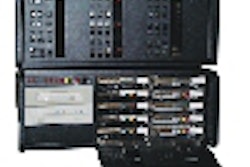SALT LAKE CITY - Healthcare in the new millennium will be characterized by a new era of high technology, according to Russell Coile, Jr., senior vice president and national strategy advisor for Superior Consultant of Plano, TX. Coile, a healthcare futurist, made his comments during his keynote address today, entitled "Medical Practice in the Millennium - A High-Technology Outlook."
With R&D spending at an all-time high for drug, device, and imaging companies, Coile foresees a new period of high-tech medicine, the seeds of which are already in place.
As we move into the 21st century, healthcare is increasingly being characterized by consumerism, Coile said. Patients are more informed than ever about the latest technology advances, thanks in large part to online resources. With resources such as the National Library of Medicine's Web site, for example, some patients are even reading the latest journal articles before their physicians are.
"If you are a newly diagnosed patient, you become the world's greatest expert in your condition," Coile said. "And you are very interested in treatment options, and the latest devices, medical innovation, and treatments. We see the power of information expanding the role of the consumer."
While the outlook for healthcare is optimistic overall, rising healthcare costs represent storm clouds on the horizon, and raise the possibility of future government regulation. Technology must be proven to show cost benefits, he said.
The pharmaceuticals market, for example, is already showing signs of increased government intervention, with 40 states considering new regulation. "Pharmaceuticals right now are at the focal point of cost-restraint initiatives, both internally within the field, and externally through government regulation and insurance controls," Coile said.
Managed care plans, previously seen as a way to keep healthcare costs down, have failed to effectively manage utilization. Premiums are on the rise, and the power of managed care is waning. As costs continue to rise, there could be a new national debate on the regulation of healthcare within a five- to 10-year time frame, he said.
"If medical costs don't slow down, and we see once again increases in healthcare expenditures exceeding the 10% or double-digit level, how many of you think there's a chance we'll see some kind of regulation in the future?" Coile said. "All of those who are committed to a private-sector solution to the rising costs of medical care had better mobilize, because I do believe that before the end of the decade, the cost pressures could very much trigger a new wave of discussion about a significant role of government in moderating costs. And government's heavy hand would not be welcomed by vendors or providers."
Looking ahead, Coile predicts that new and emerging technologies such as genomics, pharmacology, device portability/miniaturization, and imaging modalities, will play a key role in medical practice. Bioengineering, computer-assisted decision support, e-health, computing technologies, hardware/software, and teleradiology will all be important factors.
Imaging techniques continue to benefit from advances in technology. Diagnostic capabilities are being enhanced by both developments in the digital domain, as well as in imaging modalities. Techniques such as computer-aided screening, CT/PET hybrid imaging devices, and 3-D/4-D modeling will bolster diagnostic capabilities.
So will virtual reality, enhanced image display, PACS, and teleradiology. "The arrival of PACS and filmless imaging was being discussed as a 10- to 20-year trend in the 1990s, but now many hospitals and medical centers are adopting these new technologies," Coile said. "Teleradiology, likewise, can become potentially a very widespread, and even universal way of the collaborative practice of medicine."
Telemedicine, of which teleradiology will play a key role, continues to face hurdles, including reimbursement issues. Some managed care organizations are beginning to pay for "televisits", however, and that barrier may be declining, he said.
Coile believes that new scanning approaches such as holography and cellular imaging may someday come into use.
Surgical advances also will take place, for example, even same-day cardiac surgery where patients go home the same day their procedure is performed. The use of radiation is being rapidly accepted in surgical applications, which may precipitate a turf war between interventional radiologists and surgeons, he said.
E-health will also be crucial in the practice of medicine. Although physicians have largely been slow adopters of computers in their practice, this will soon change as younger, more computer-literate physicians join the workforce. "Computers will not simply be seen as an adjunct to medicine, but (as a way) to enable clinical practice," he said. Over the long term, the reading of a conventional x-ray might become a digitally enabled process, with little hands-on involvement by humans, he said.
Coile presented one possible vision of the healthcare environment of the future. By the year 2030, the average hospital department could consist of a small staff of humans, assisted by robots.
Claims would have to adhere to a centralized database of procedure guidelines, but authorizations could be granted in 30 seconds and reimbursement sent via e-mail. Too good to be true? Coile reminded the audience that predictions of technological change have often occurred faster than expected.
By Erik L. Ridley
AuntMinnie.com staff writers
May 3, 2001
To view the rest of AuntMinnie's coverage of the SCAR meeting, just go to our RADCast@SCAR 2001 at http://scar.auntminnie.com.
Click here to post your comments about this story in our PACS Digital Community. Please include the headline of the article in your message.
Copyright © 2001 AuntMinnie.com




















